 Greetings friends, long ago I told you about the benefits of Veeam Cloud Connect, and since then I know that there are many of you who have become one of them. At the same time I know the problems when monitoring the components, and the tenants in a precise way, that’s why today I bring you this post to see how to monitor Veeam Cloud Connect with Veeam ONE.
Greetings friends, long ago I told you about the benefits of Veeam Cloud Connect, and since then I know that there are many of you who have become one of them. At the same time I know the problems when monitoring the components, and the tenants in a precise way, that’s why today I bring you this post to see how to monitor Veeam Cloud Connect with Veeam ONE.
Veeam ONE Monitor – Monitor the status of Veeam Cloud Connect components
The first thing we want to monitor is the state of the components, such as repositories, cloud connect gateways, etc. Let’s see all of them, from our Veeam ONE Monitor, we’ll add the Veeam Cloud Connect server:
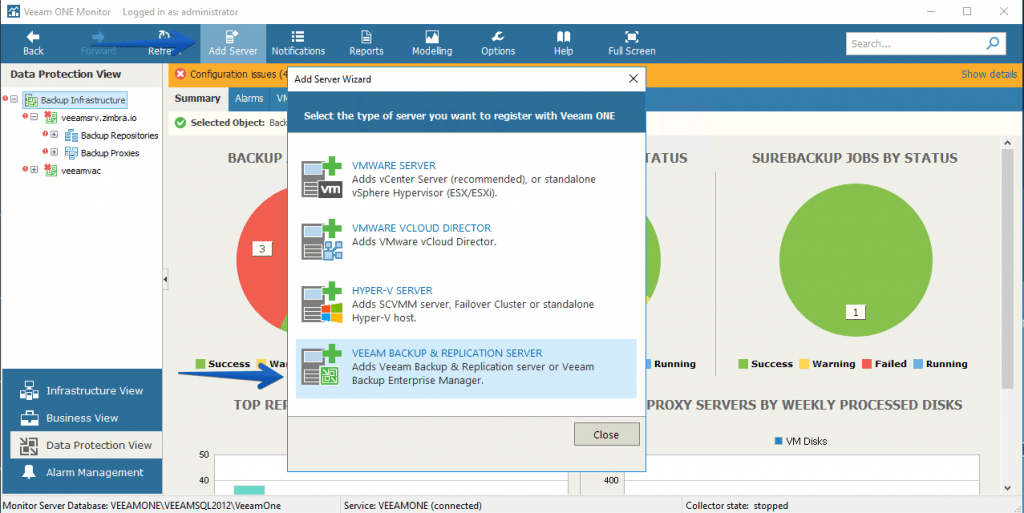 Once we leave it a few minutes collecting information, we can see all the information, for example, a quick look at the status of the Backup Repository:
Once we leave it a few minutes collecting information, we can see all the information, for example, a quick look at the status of the Backup Repository:
 If we go to Backup Repositories, we will be able to see in more detail the status of the Backup Repositories we are serving:
If we go to Backup Repositories, we will be able to see in more detail the status of the Backup Repositories we are serving:
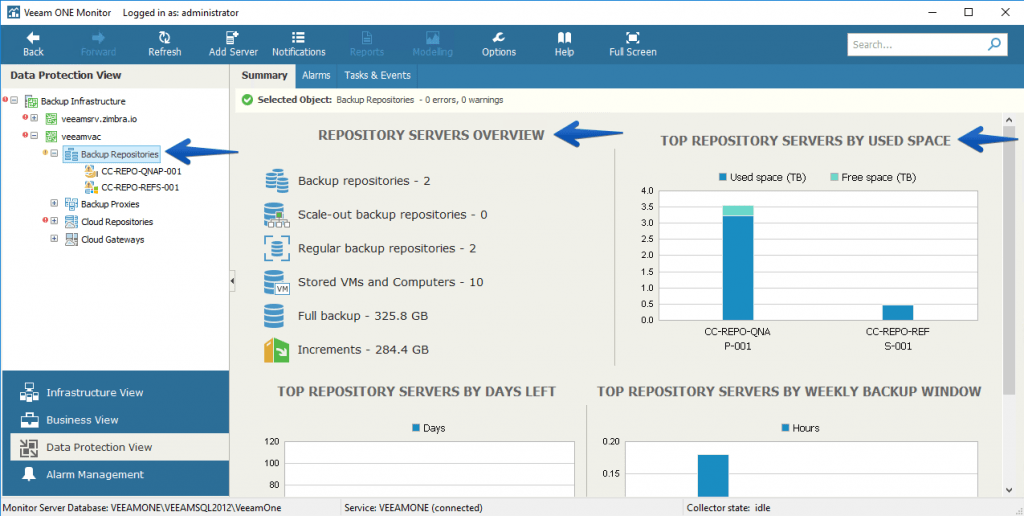 But without a doubt, the most important will be the components dedicated to Veeam Cloud Connect, such as the Cloud Repositories (abstraction and virtual space for each Tenant), of which Veeam ONE presents detailed information of consumption and use, one of the most important metrics is the amount of GB per day of the Repositories:
But without a doubt, the most important will be the components dedicated to Veeam Cloud Connect, such as the Cloud Repositories (abstraction and virtual space for each Tenant), of which Veeam ONE presents detailed information of consumption and use, one of the most important metrics is the amount of GB per day of the Repositories:
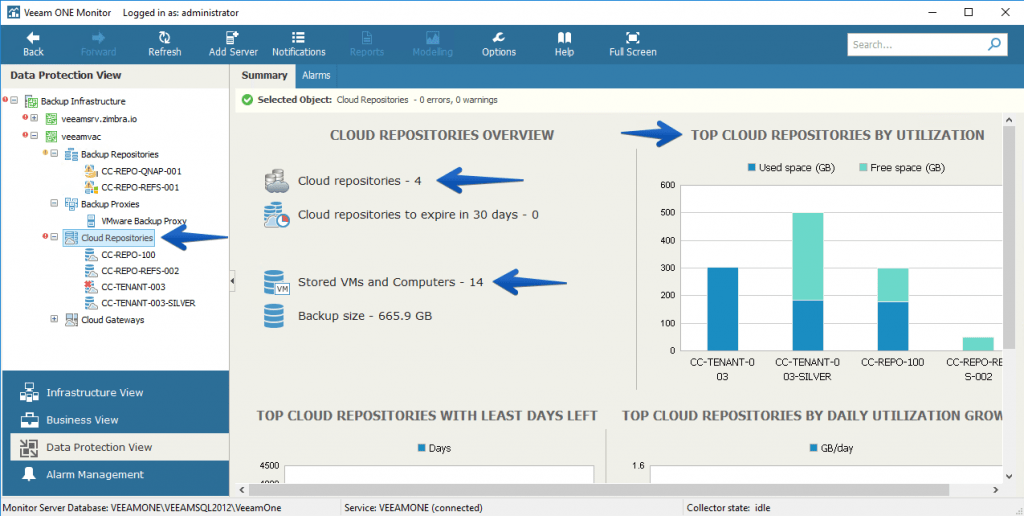 If we move to one of the Cloud Repositories, we can see in detail the tenant to which they belong, details such as when the contract expires, and for example the number of VMs it is sending to you as Service Providers:
If we move to one of the Cloud Repositories, we can see in detail the tenant to which they belong, details such as when the contract expires, and for example the number of VMs it is sending to you as Service Providers: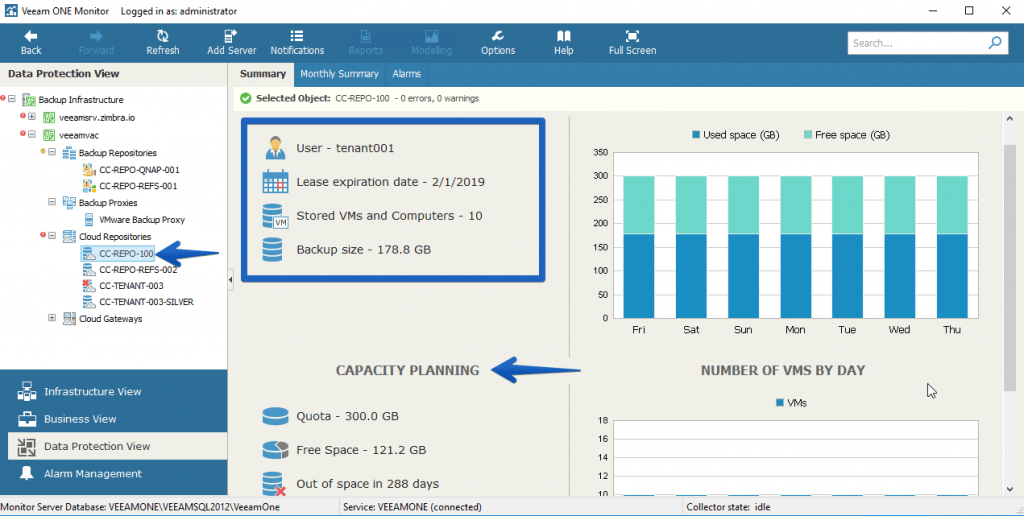 At Cloud Gateways level, let’s remember that these are the servers that process the information that Tenant or clients send you from the Internet, always important to monitor the concurrent number of sessions, and the information that is transferred to avoid bottlenecks:
At Cloud Gateways level, let’s remember that these are the servers that process the information that Tenant or clients send you from the Internet, always important to monitor the concurrent number of sessions, and the information that is transferred to avoid bottlenecks:
 In addition, we will find very important visualizations, and easy to generate, for example the Top Tenants, a list generated very quickly that gives us an important glimpse in a simple way:
In addition, we will find very important visualizations, and easy to generate, for example the Top Tenants, a list generated very quickly that gives us an important glimpse in a simple way:
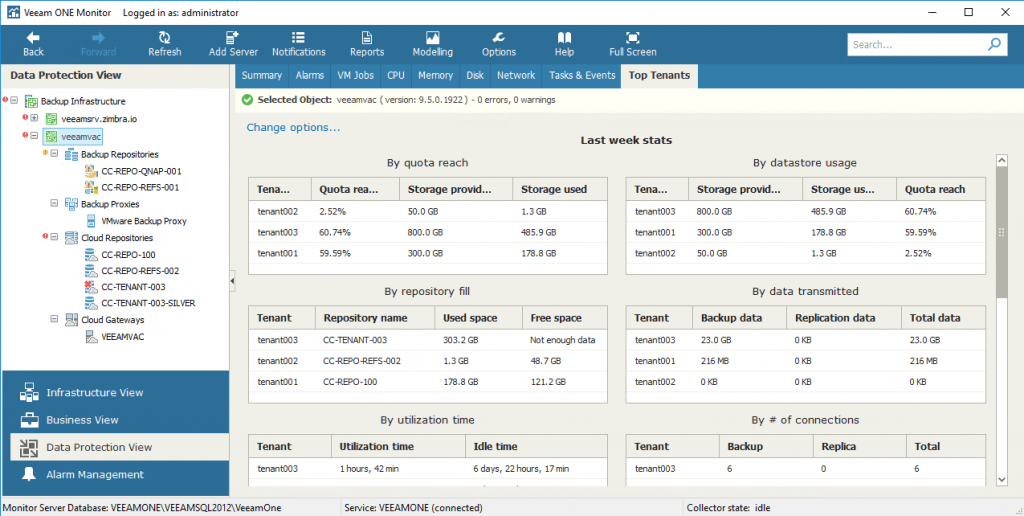 Of course, Veeam ONE Monitor generates and sends you all the alarms on the status of any component of Veeam Cloud Connect, so you can be proactive to avoid bottlenecks, or storage problems:
Of course, Veeam ONE Monitor generates and sends you all the alarms on the status of any component of Veeam Cloud Connect, so you can be proactive to avoid bottlenecks, or storage problems:
Veeam ONE Reporter – Reports to keep up to date with everything
If we go to the Veeam ONE Reporter section, we’ll also find a package with several reports for Veeam Cloud Connect, we’ll see all the reports there are: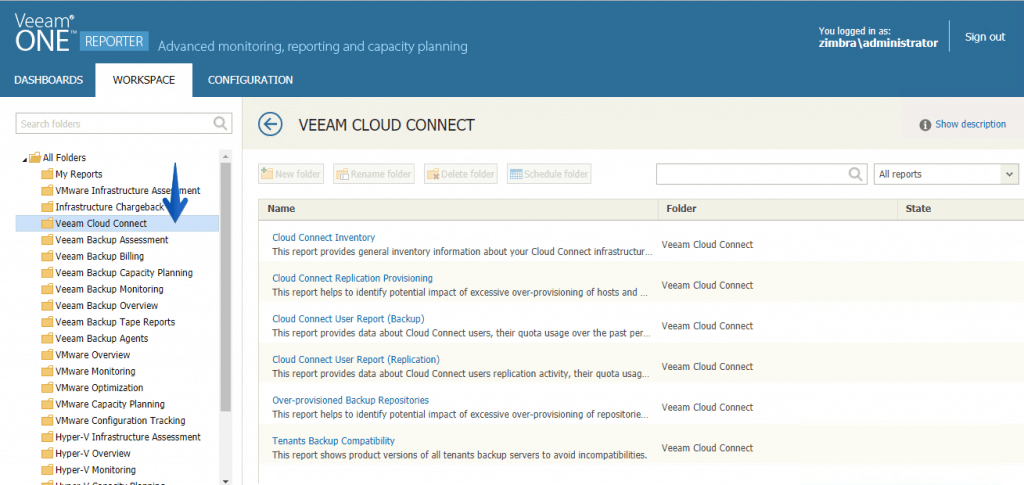 Cloud Connect Inventory – This report will show us in detail all the components that make up our Veeam Cloud Connect, as well as our license, etc:
Cloud Connect Inventory – This report will show us in detail all the components that make up our Veeam Cloud Connect, as well as our license, etc: Cloud Connect User Report (Backup) – This report generates a list of all tenants and disk usage during the period we select:
Cloud Connect User Report (Backup) – This report generates a list of all tenants and disk usage during the period we select: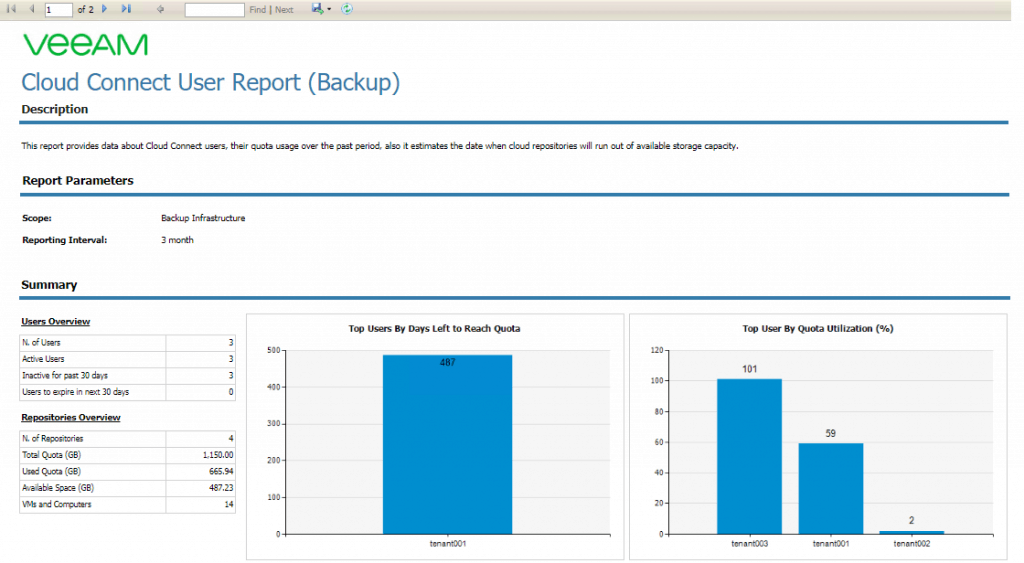 Cloud Connect User Report (Replication) – This report generates a list of all tenants and replication usage during the period we select:
Cloud Connect User Report (Replication) – This report generates a list of all tenants and replication usage during the period we select: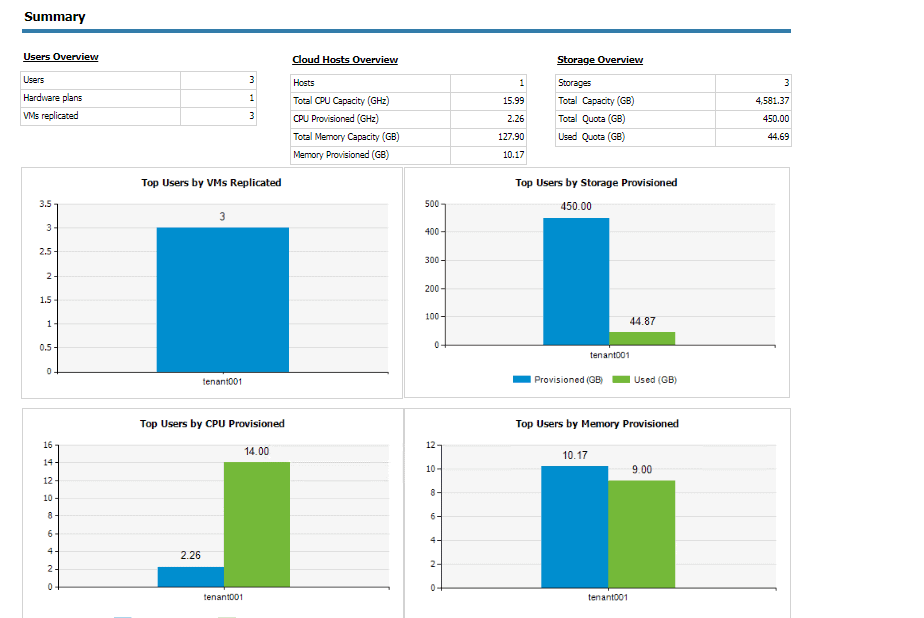 Over-provisioned Backup Repositories – This report will help us to check if we have oversized the Backup Repositories and if so, how much. Let’s imagine that we have 10TB of disk, and we distribute it among 10 clients with 5TB of quota, since we trust in the deduplication and compression, etc. This will make us have that over sizing (always risky):
Over-provisioned Backup Repositories – This report will help us to check if we have oversized the Backup Repositories and if so, how much. Let’s imagine that we have 10TB of disk, and we distribute it among 10 clients with 5TB of quota, since we trust in the deduplication and compression, etc. This will make us have that over sizing (always risky):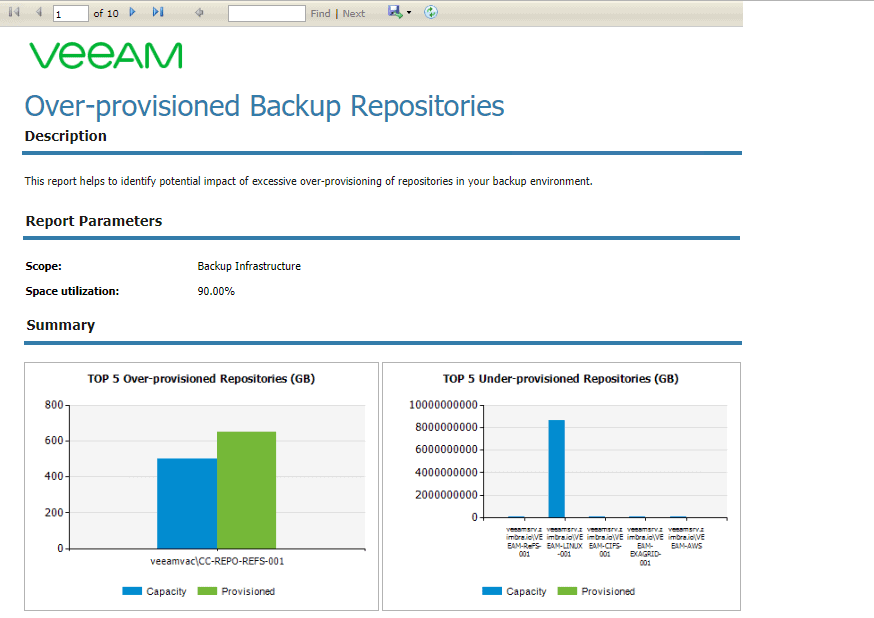 Tenants Backup Compatibility – This report serves to check the version in which are the different Tenants that send us Backups:
Tenants Backup Compatibility – This report serves to check the version in which are the different Tenants that send us Backups: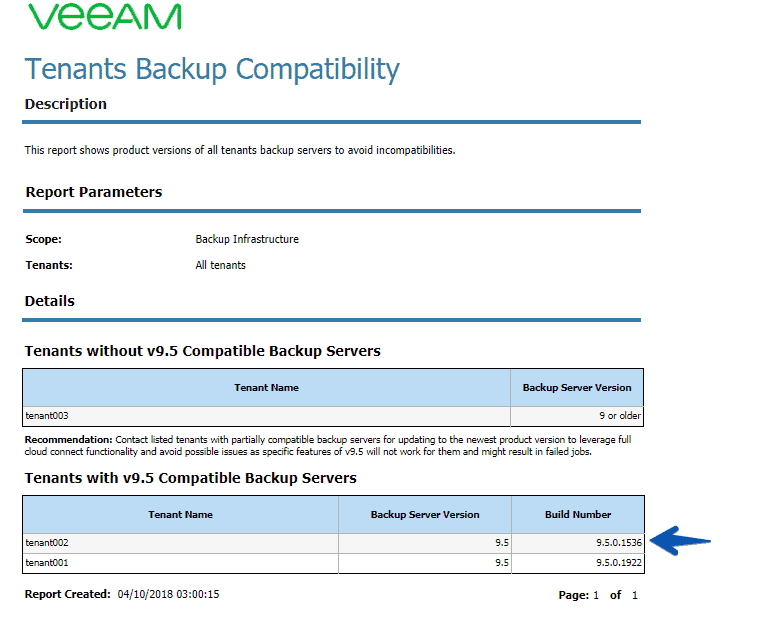 If you are interested in Veeam Availability Console to serve your customers in a much more modern way through a web interface, etc, I leave you the whole menu with the series in Spanish:
If you are interested in Veeam Availability Console to serve your customers in a much more modern way through a web interface, etc, I leave you the whole menu with the series in Spanish:
- Veeam Availability Console I – Teoría e información útil sobre el producto
- Veeam Availability Console II – Instalación de Veeam Availability Console
- Veeam Availability Console III – Configuración y conexión con VBR Server
- Veeam Availability Console IV – Administración centralizada de Veeam Backup Agents
- Veeam Availability Console V – Backup de Agentes a diferentes destinos, SMB, Repositorio Veeam o Cloud Connect
- Veeam Availability Console VI – Reportes de Backup de Veeam Agent y Veeam Backup and Replication
- Veeam Availability Console VII – Manejando la Facturación de Veeam Agents, Backup and Replication y Cloud Connect

Can we connect VeeamOne to the VAC VMs too? Which VM do we need to add to VeeamOne so that we can track the daily backup status of Cloud Connect VM Backups and Replications?